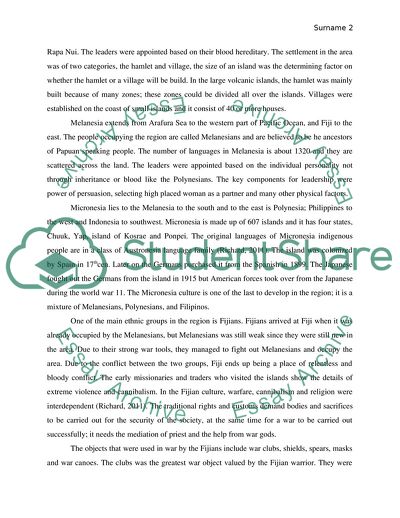Cite this document
(The Main Cultural Groups in the Pacific Ocean - Polynesia, Micronesia, Essay, n.d.)
The Main Cultural Groups in the Pacific Ocean - Polynesia, Micronesia, Essay. https://studentshare.org/culture/1770649-how-did-the-cultural-beliefs-of-oceaniapacific-influence-and-display-itself-in-the-production-of-art-objects-in-warfare-their-weapons-used
The Main Cultural Groups in the Pacific Ocean - Polynesia, Micronesia, Essay. https://studentshare.org/culture/1770649-how-did-the-cultural-beliefs-of-oceaniapacific-influence-and-display-itself-in-the-production-of-art-objects-in-warfare-their-weapons-used
(The Main Cultural Groups in the Pacific Ocean - Polynesia, Micronesia, Essay)
The Main Cultural Groups in the Pacific Ocean - Polynesia, Micronesia, Essay. https://studentshare.org/culture/1770649-how-did-the-cultural-beliefs-of-oceaniapacific-influence-and-display-itself-in-the-production-of-art-objects-in-warfare-their-weapons-used.
The Main Cultural Groups in the Pacific Ocean - Polynesia, Micronesia, Essay. https://studentshare.org/culture/1770649-how-did-the-cultural-beliefs-of-oceaniapacific-influence-and-display-itself-in-the-production-of-art-objects-in-warfare-their-weapons-used.
“The Main Cultural Groups in the Pacific Ocean - Polynesia, Micronesia, Essay”. https://studentshare.org/culture/1770649-how-did-the-cultural-beliefs-of-oceaniapacific-influence-and-display-itself-in-the-production-of-art-objects-in-warfare-their-weapons-used.


